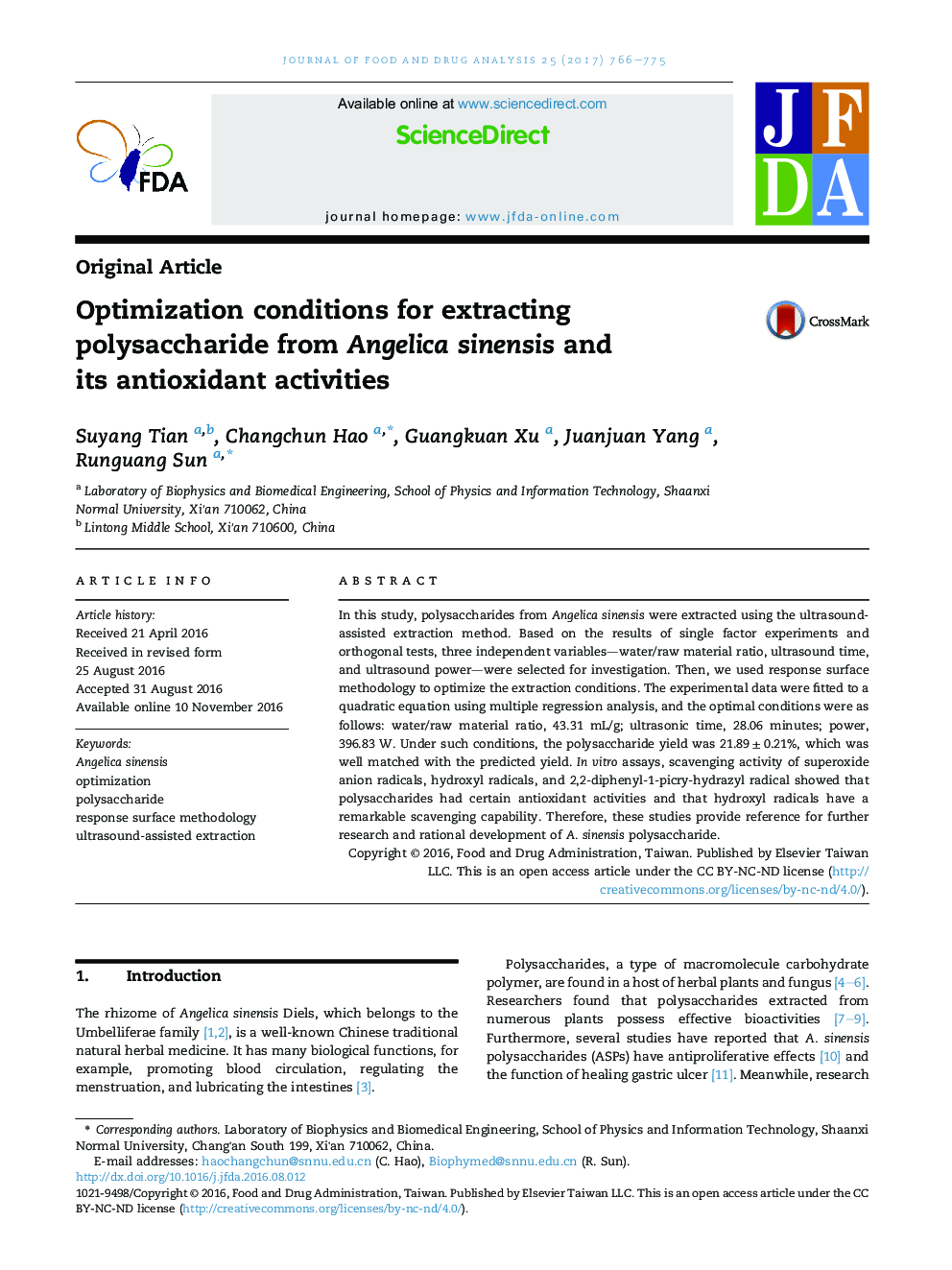| Article ID | Journal | Published Year | Pages | File Type |
|---|---|---|---|---|
| 5550989 | Journal of Food and Drug Analysis | 2017 | 10 Pages |
â¢We used the ultrasonic-assistant method to extract polysaccharide of Angelica sinensis.â¢Response surface methodology is used for optimizing the extraction conditions.â¢We confirm the optimal conditions for polysaccharide extraction of Angelica sinensis.â¢The polysaccharide had remarkably scavenging capability of hydroxyl radical.
In this study, polysaccharides from Angelica sinensis were extracted using the ultrasound-assisted extraction method. Based on the results of single factor experiments and orthogonal tests, three independent variables-water/raw material ratio, ultrasound time, and ultrasound power-were selected for investigation. Then, we used response surface methodology to optimize the extraction conditions. The experimental data were fitted to a quadratic equation using multiple regression analysis, and the optimal conditions were as follows: water/raw material ratio, 43.31 mL/g; ultrasonic time, 28.06 minutes; power, 396.83 W. Under such conditions, the polysaccharide yield was 21.89 ± 0.21%, which was well matched with the predicted yield. In vitro assays, scavenging activity of superoxide anion radicals, hydroxyl radicals, and 2,2-diphenyl-1-picry-hydrazyl radical showed that polysaccharides had certain antioxidant activities and that hydroxyl radicals have a remarkable scavenging capability. Therefore, these studies provide reference for further research and rational development of A. sinensis polysaccharide.
Graphical abstractDownload high-res image (240KB)Download full-size image
